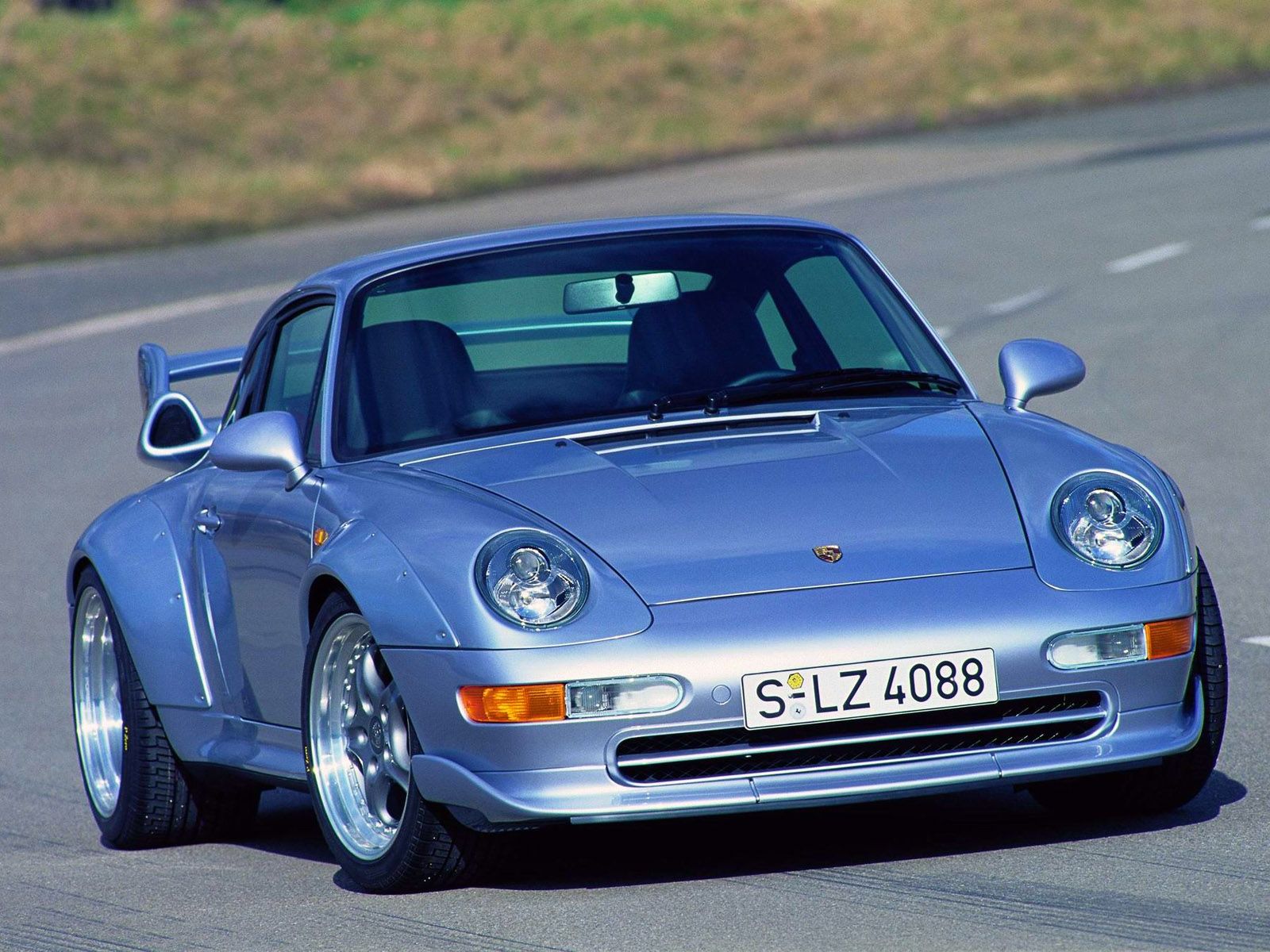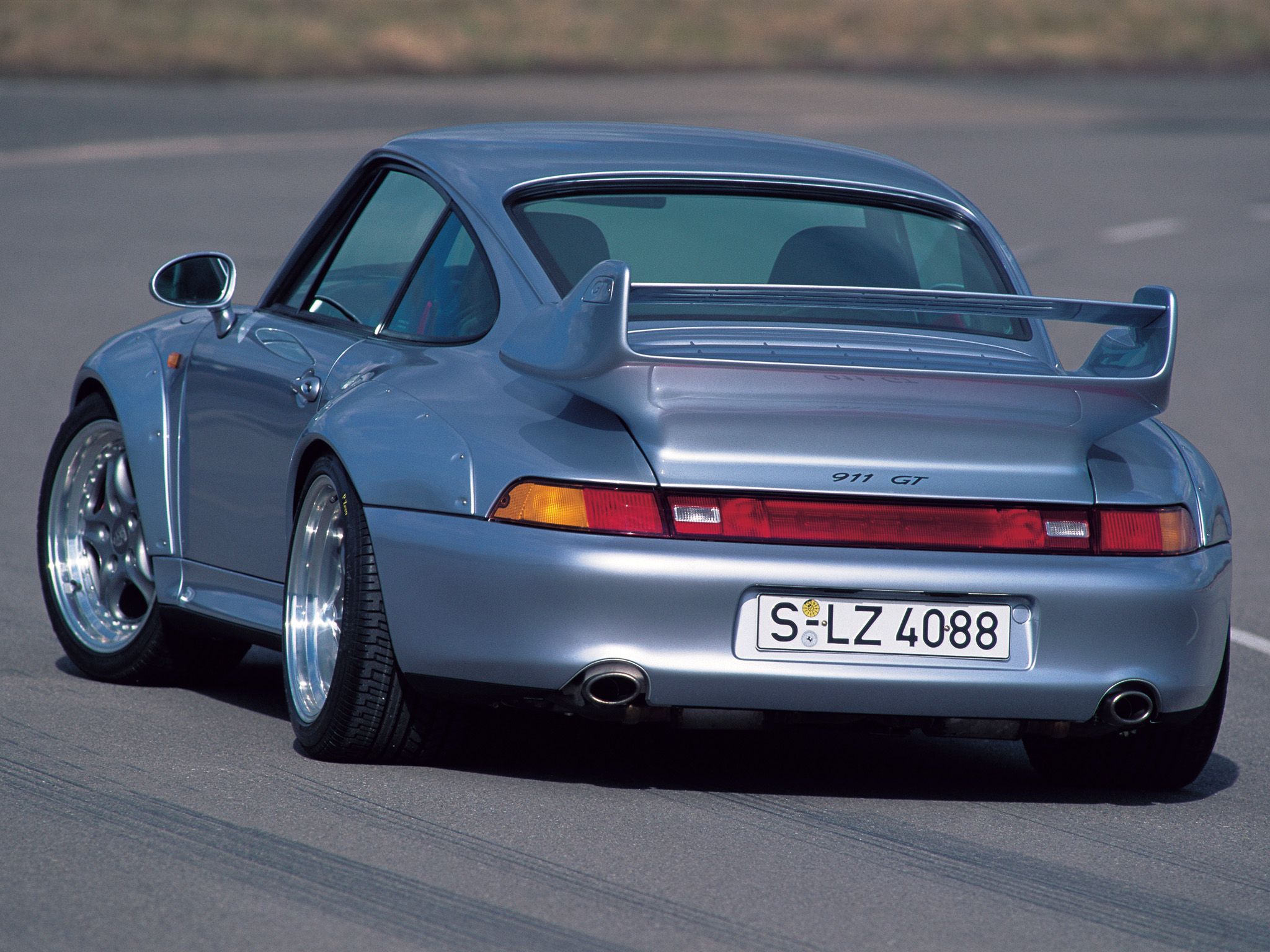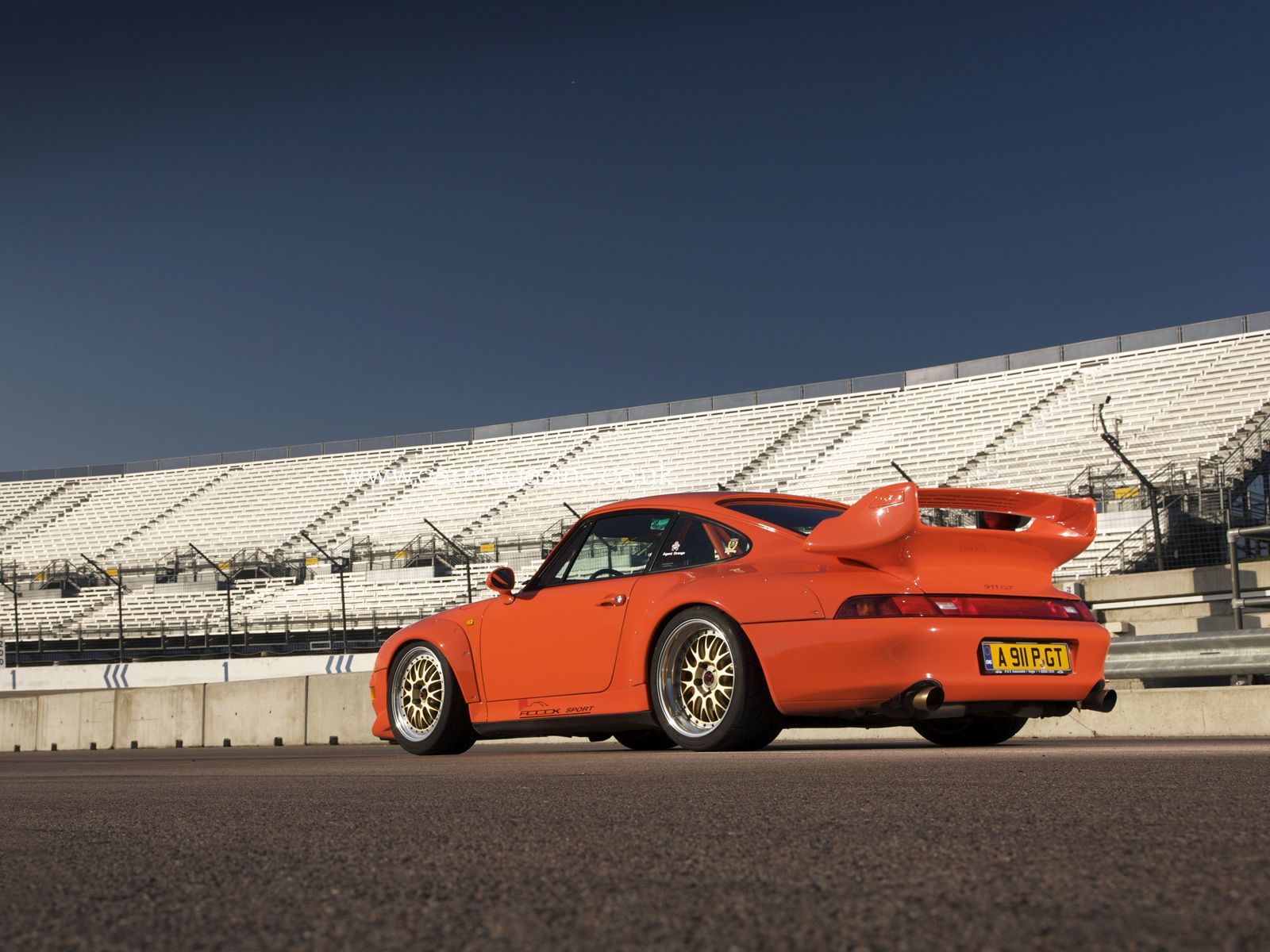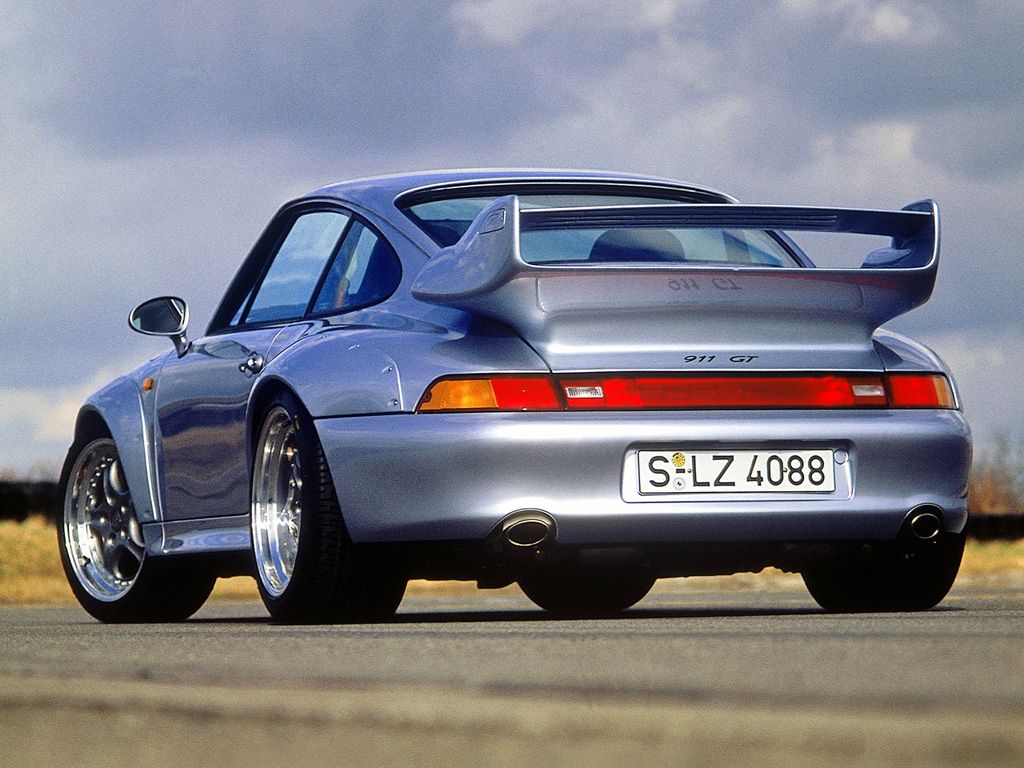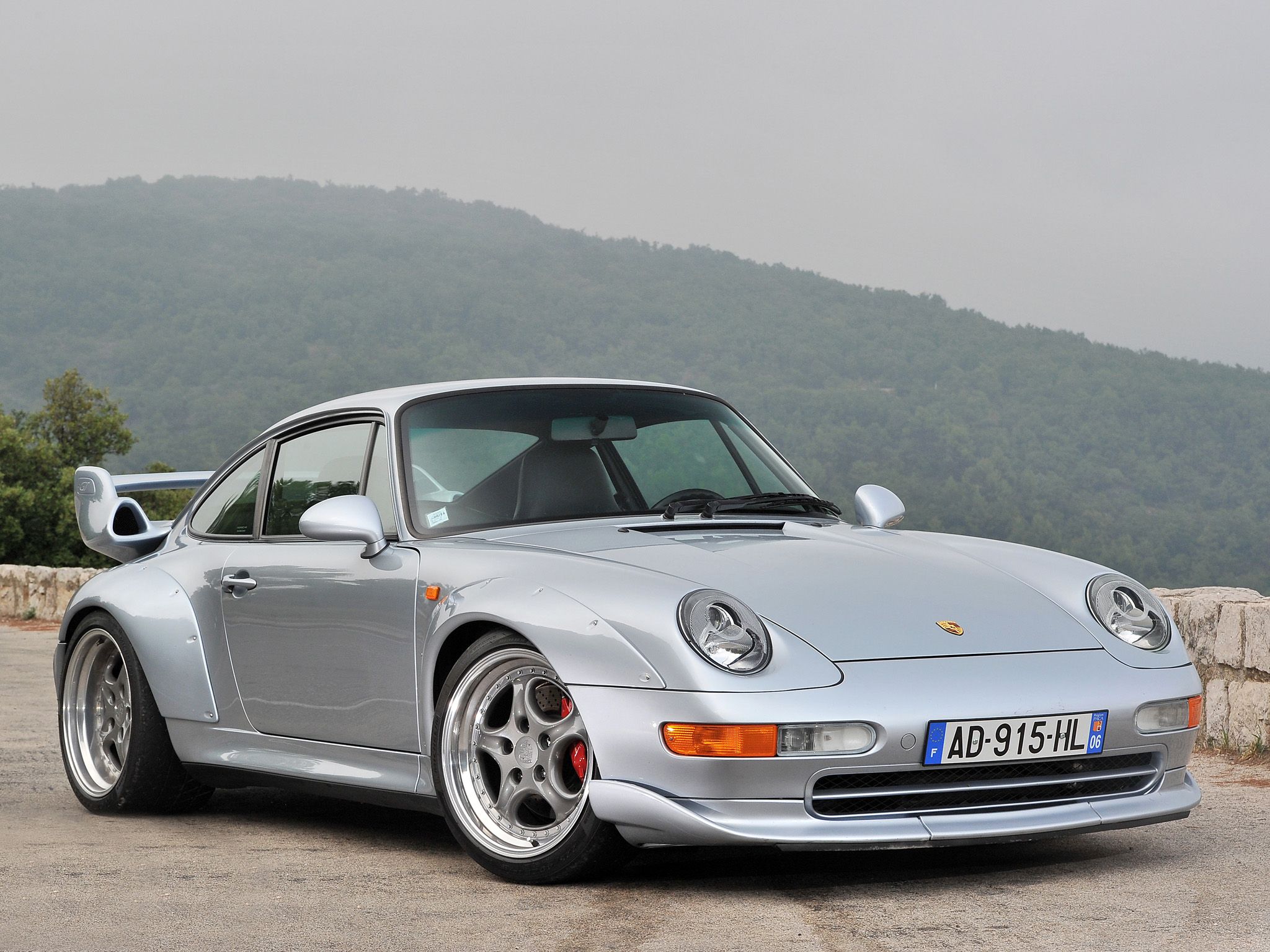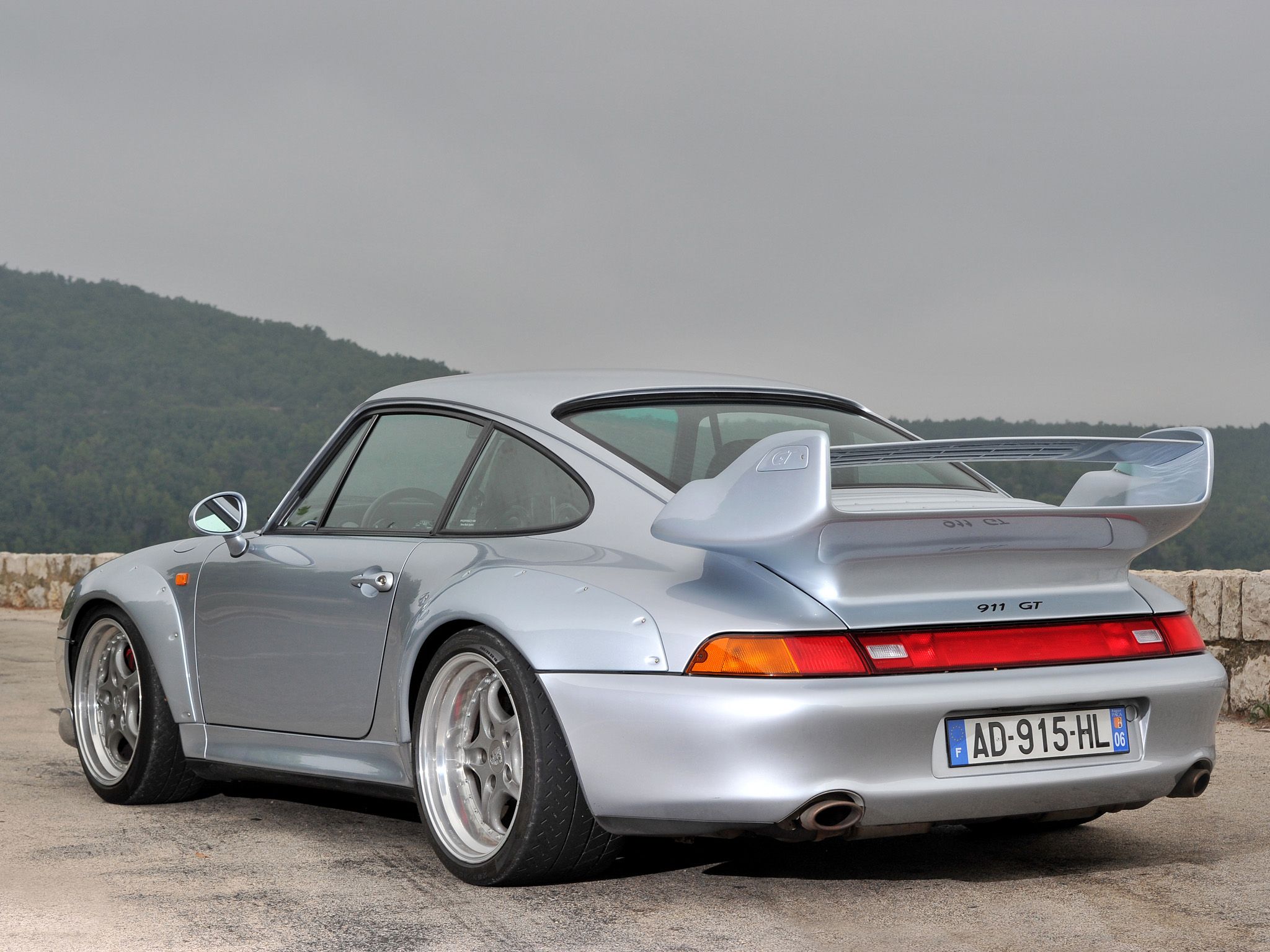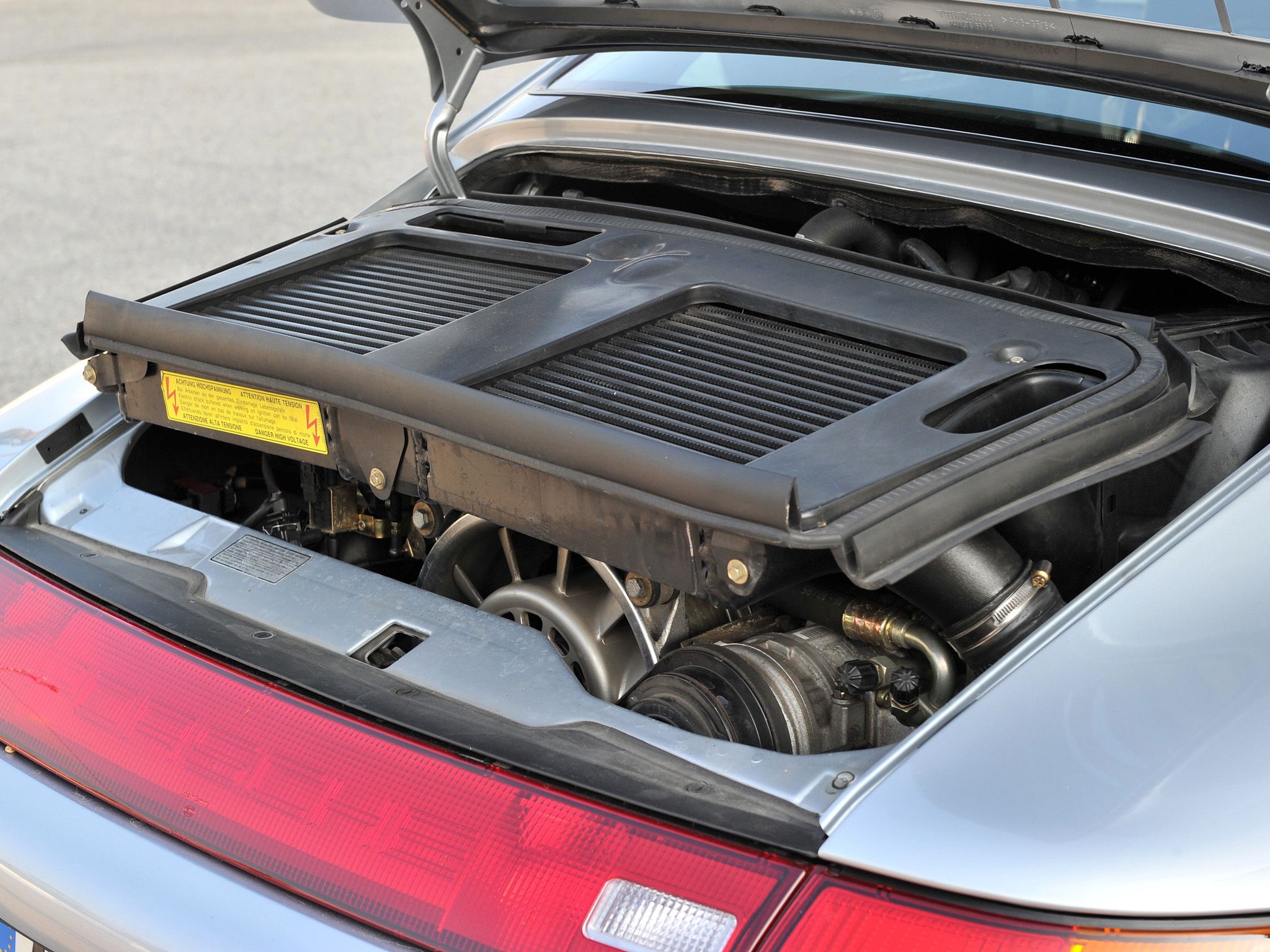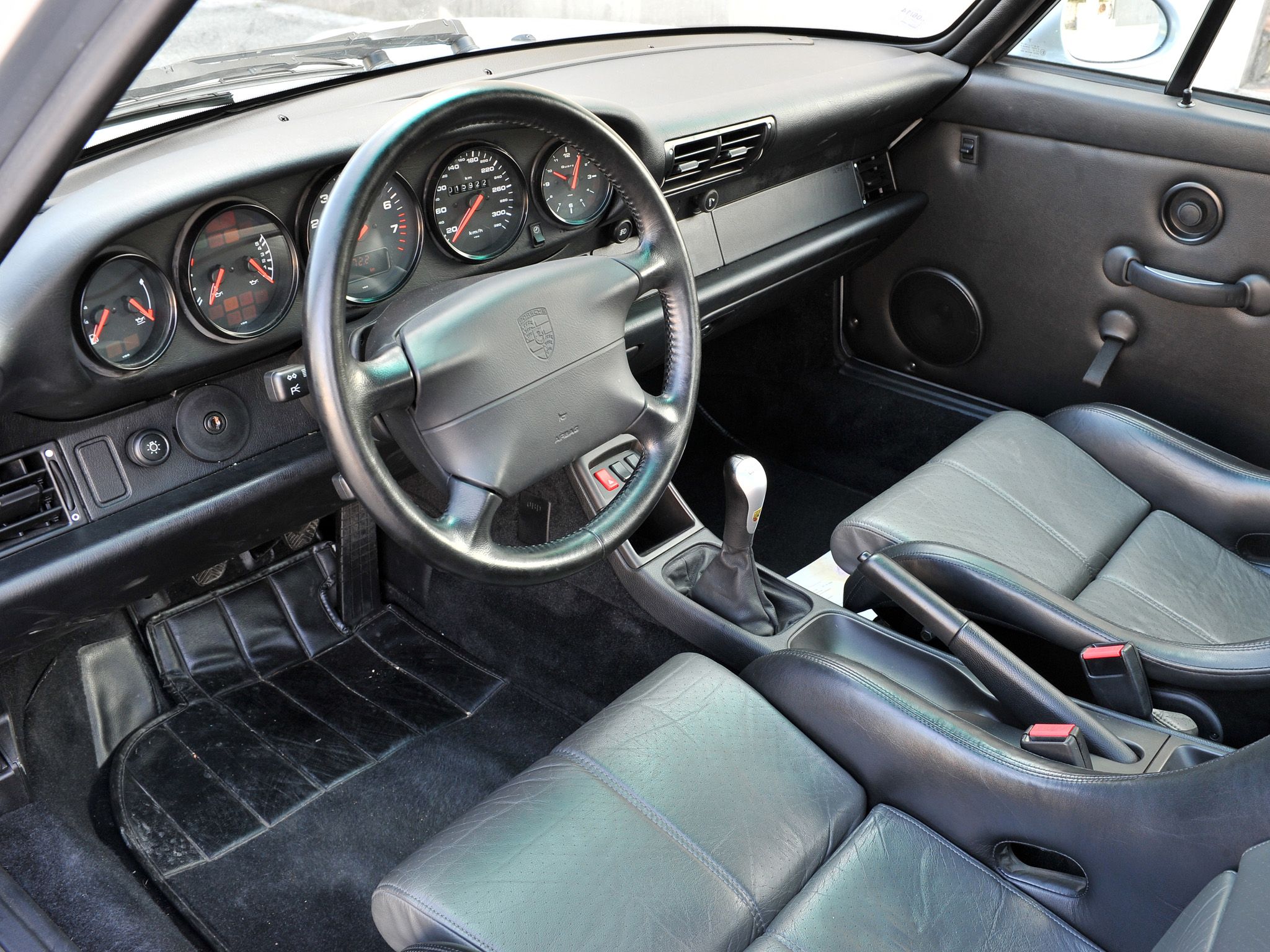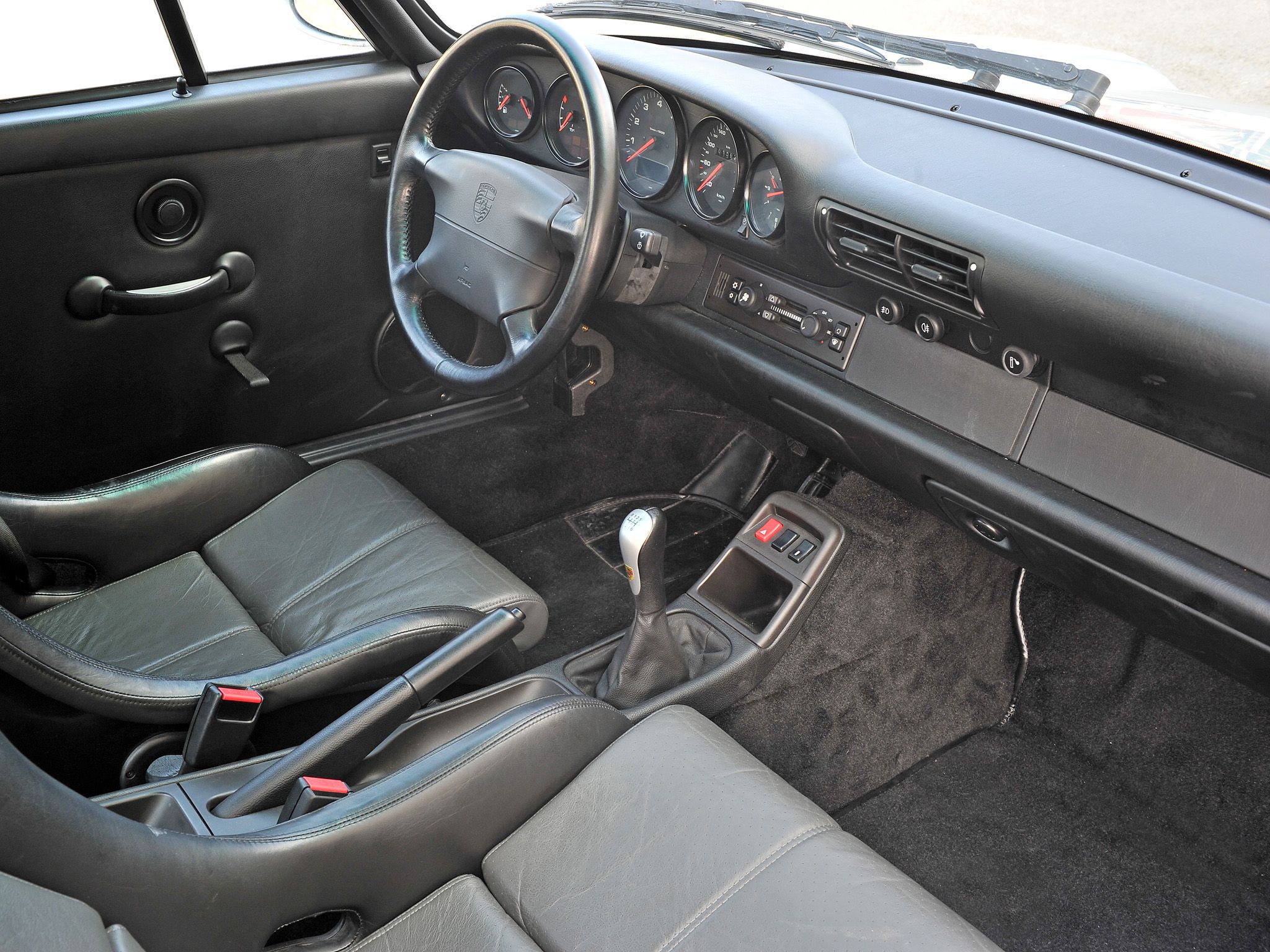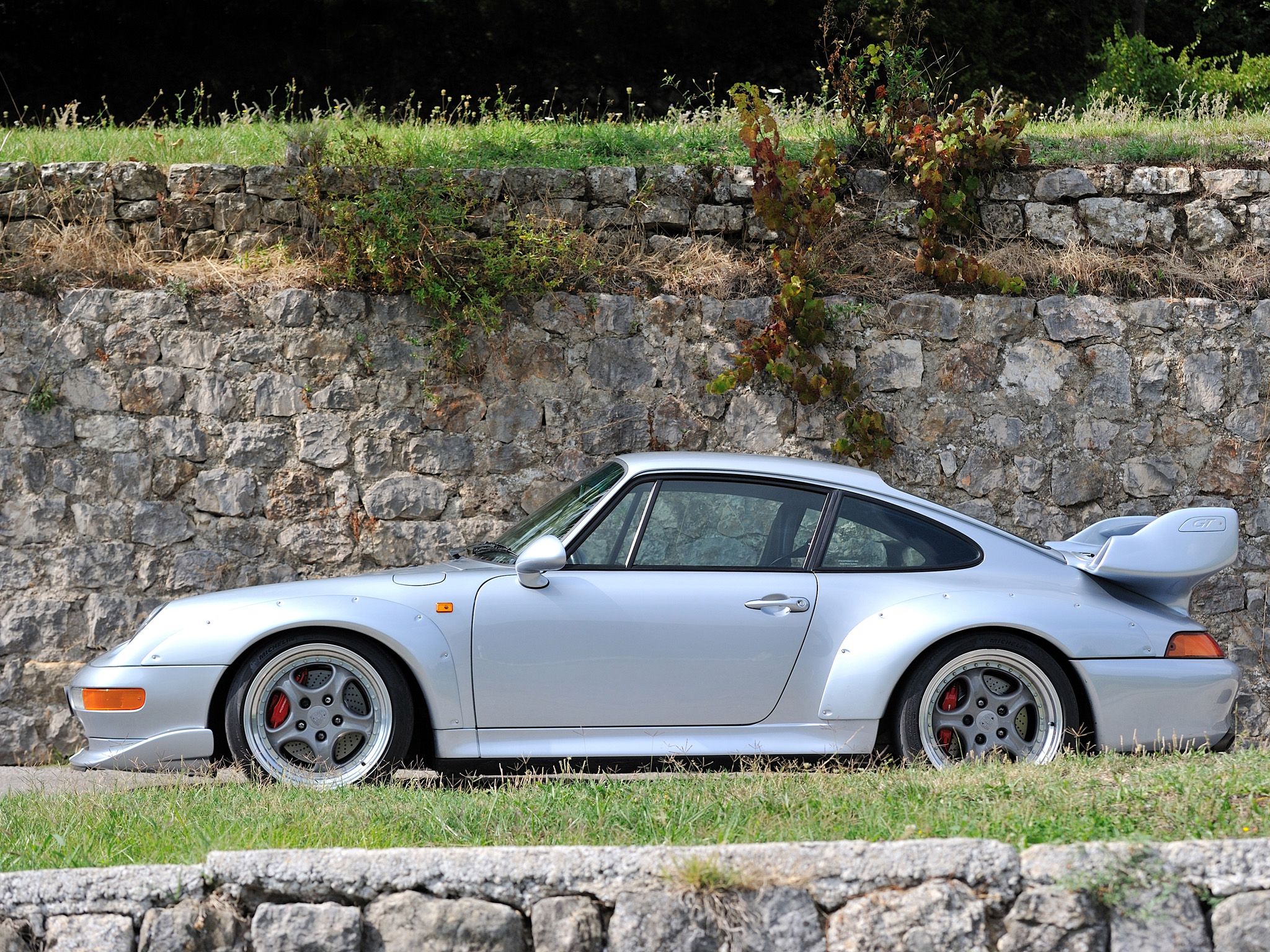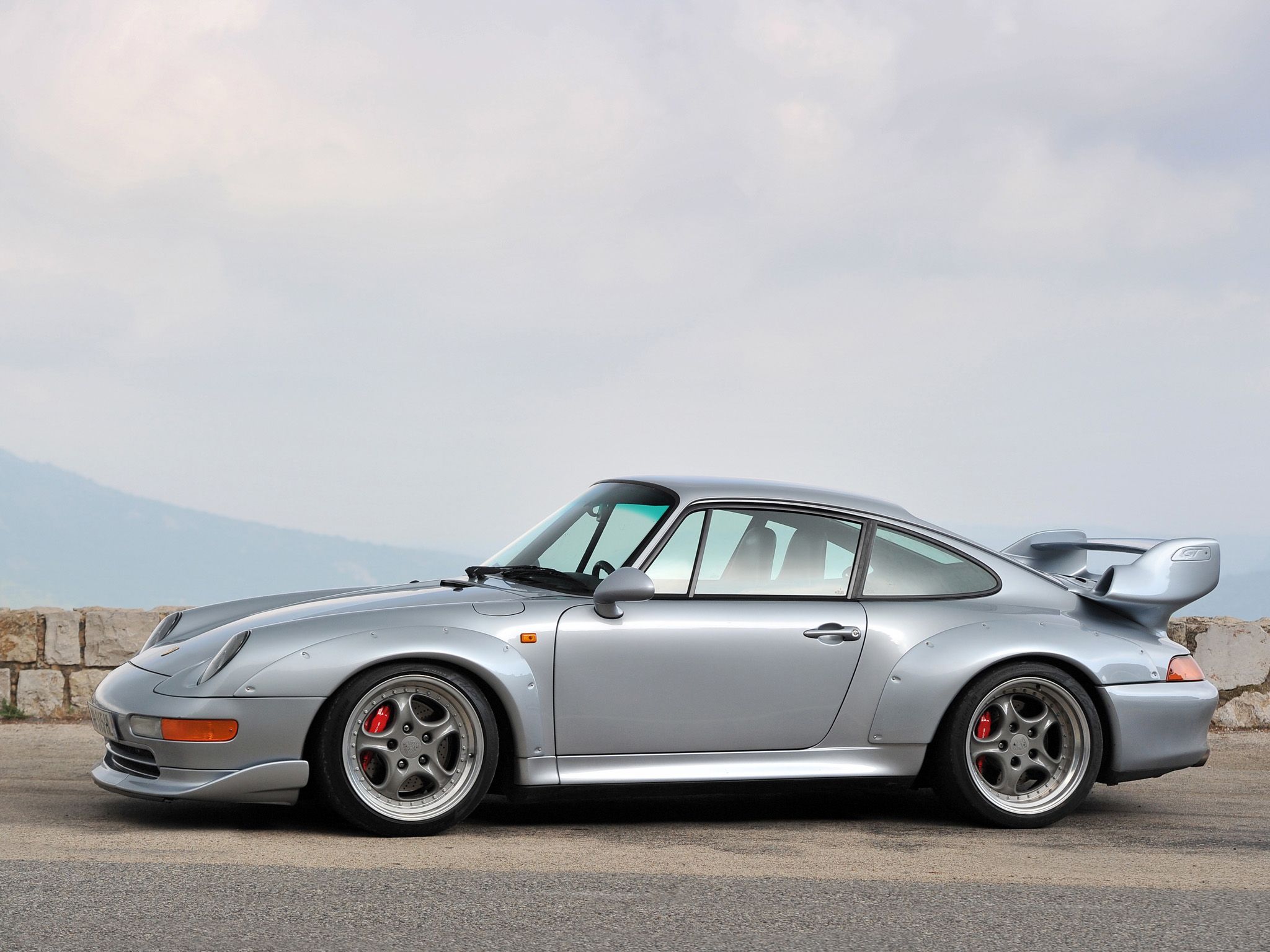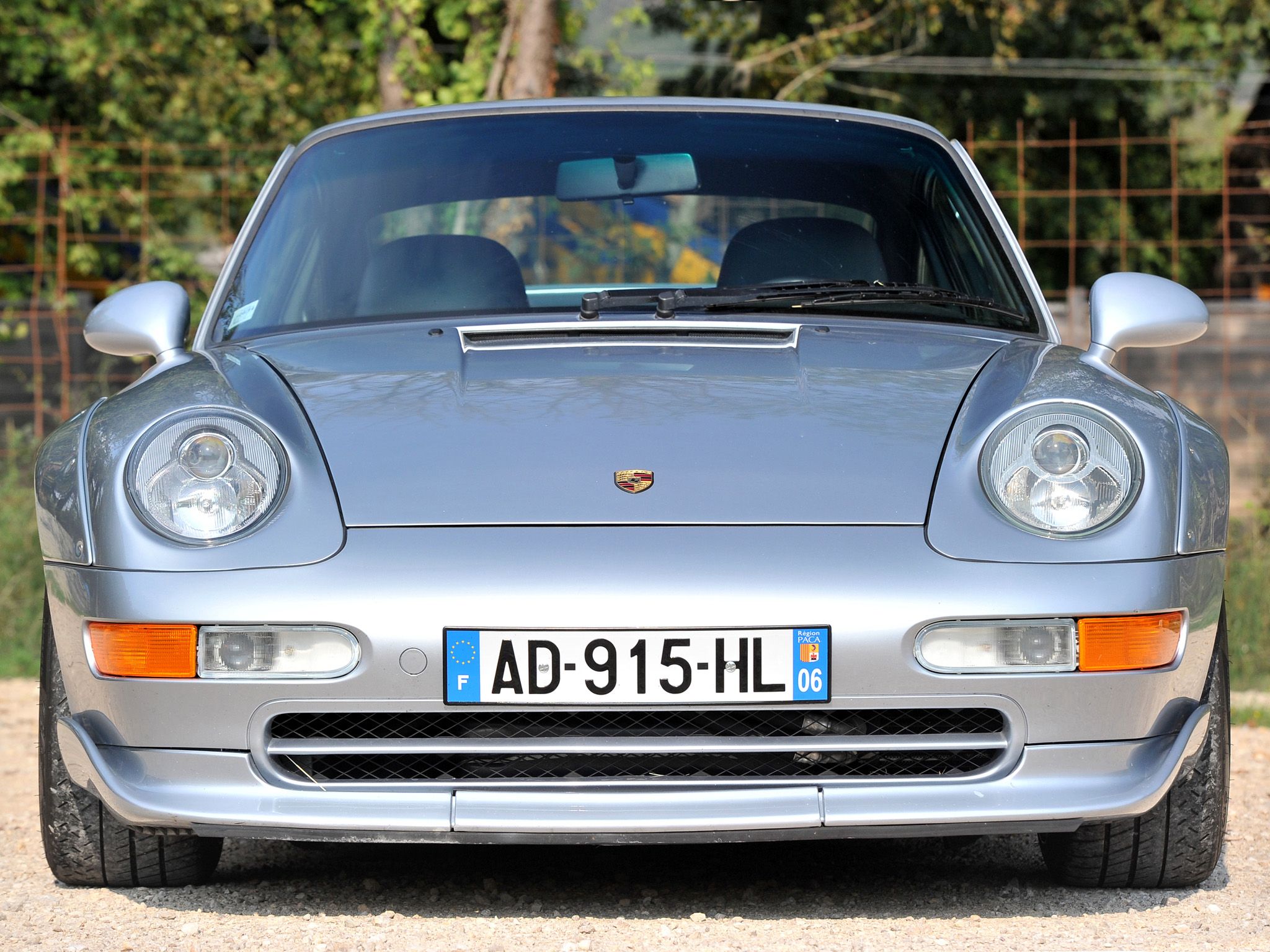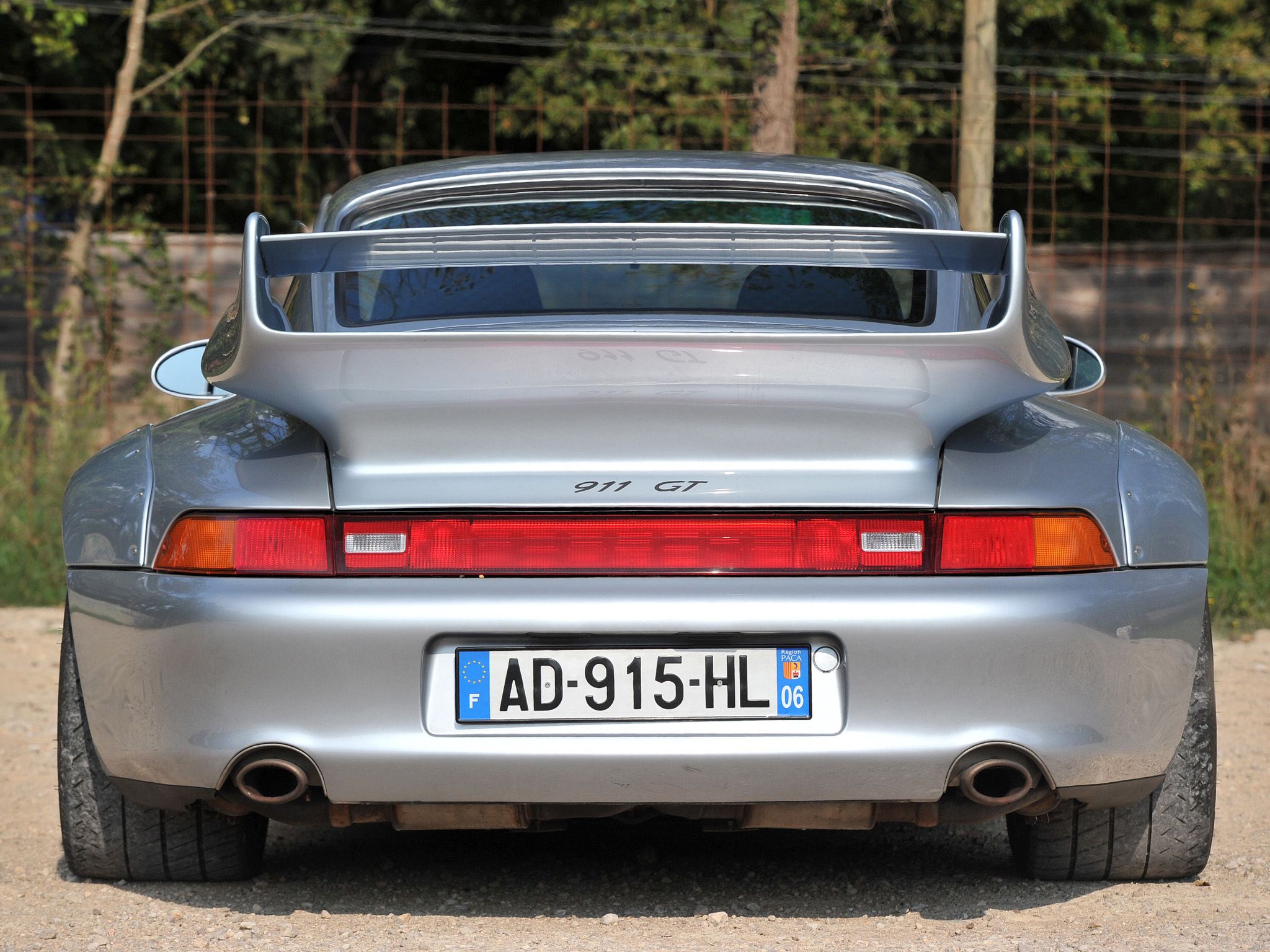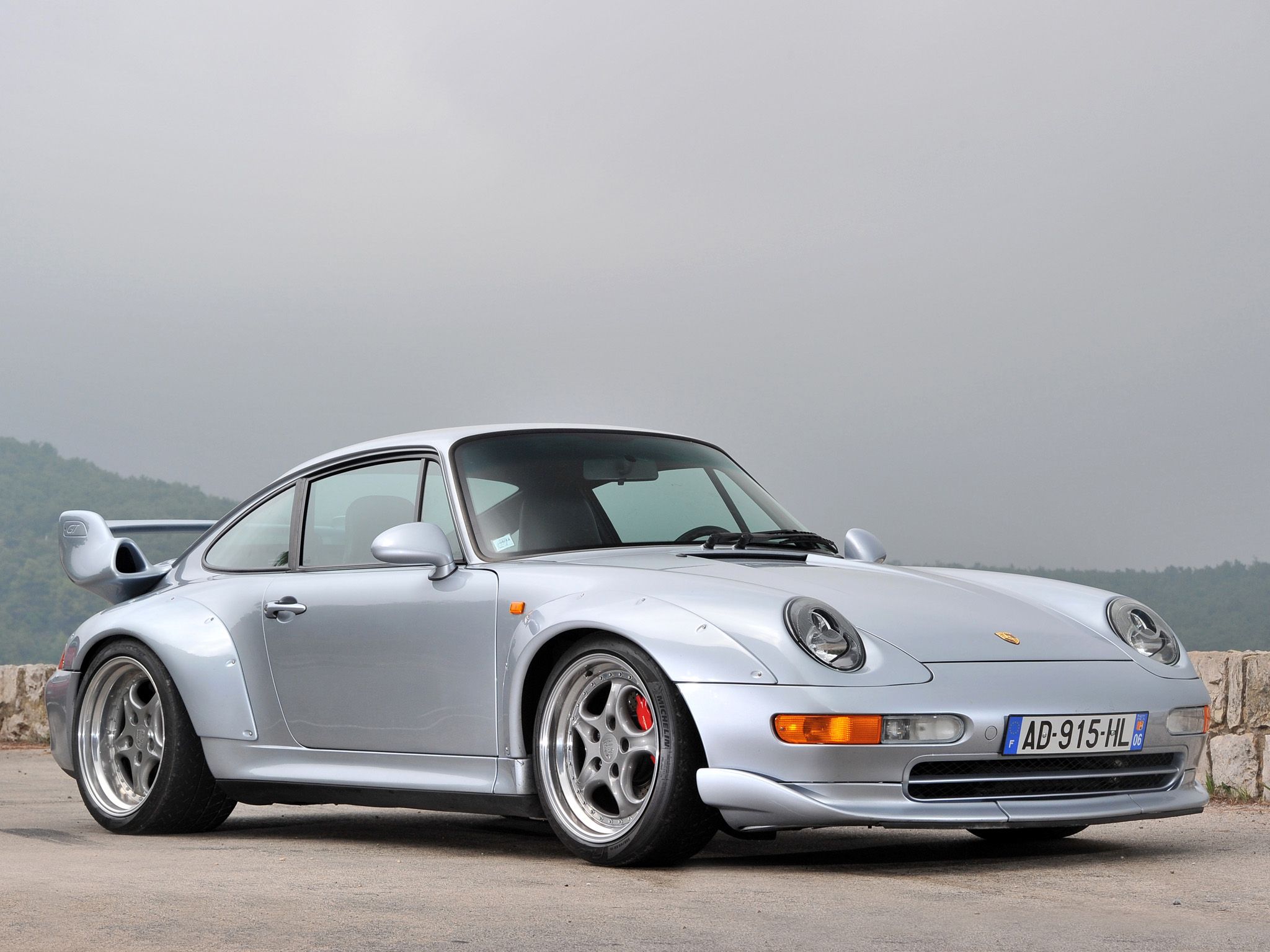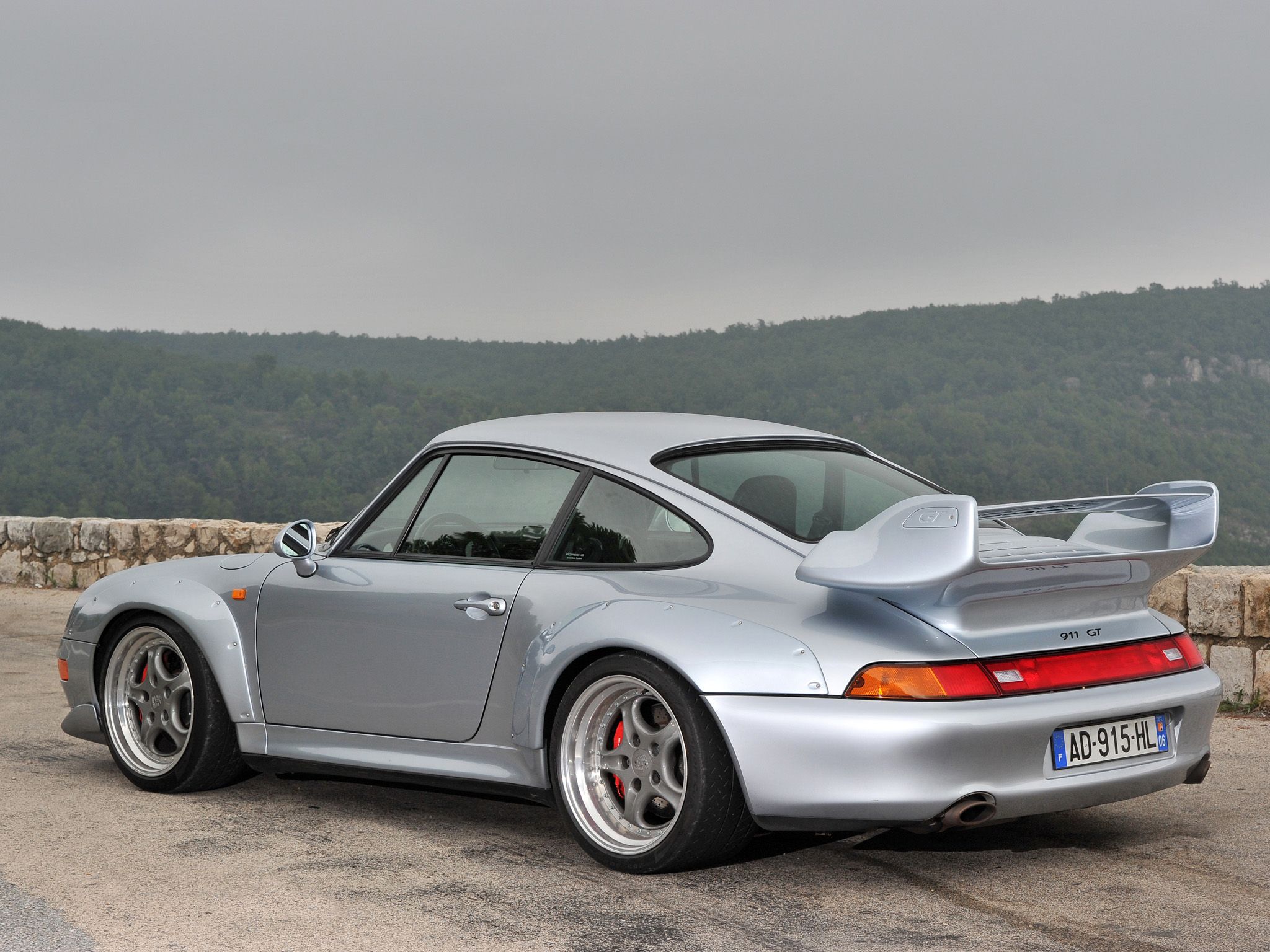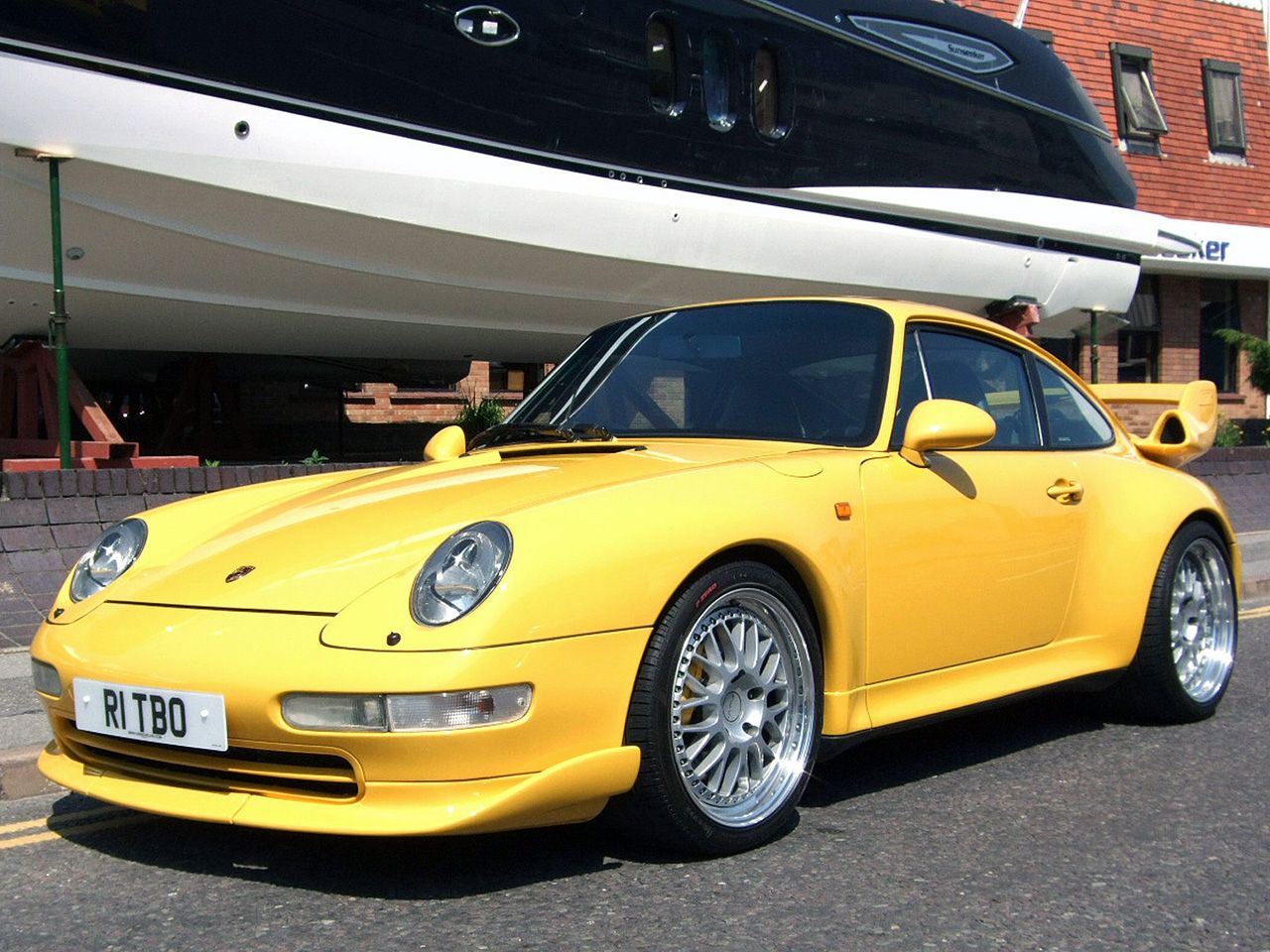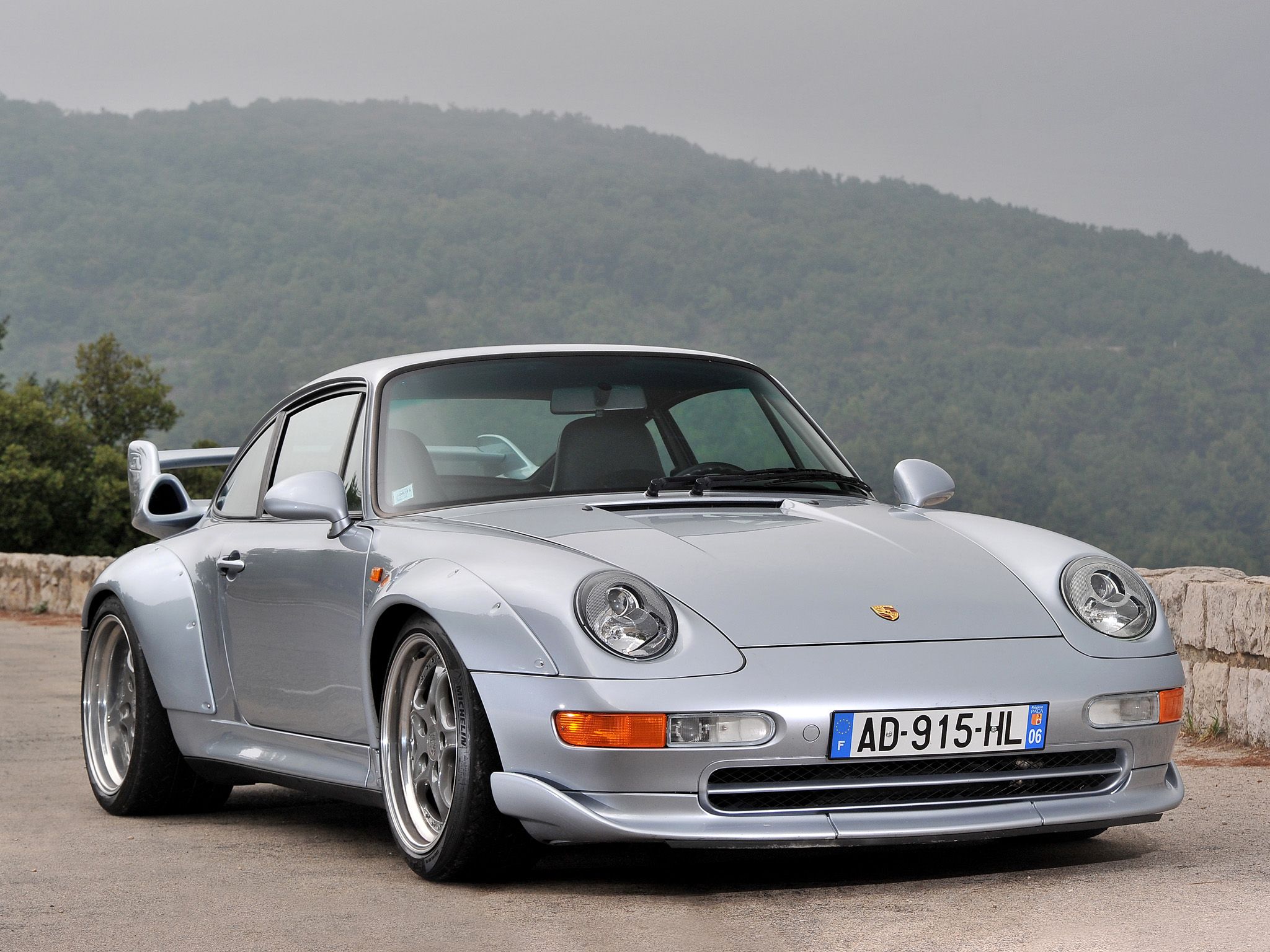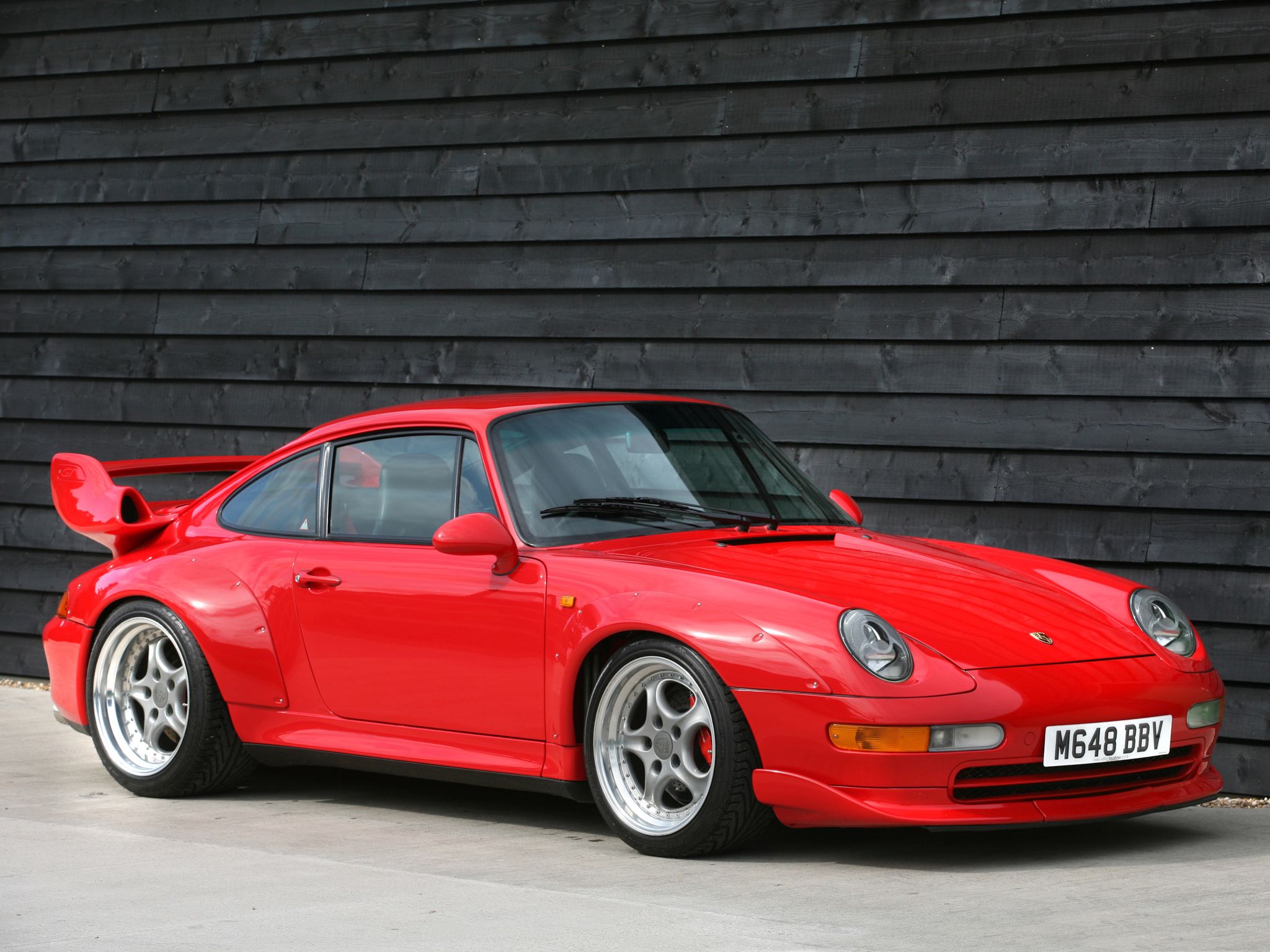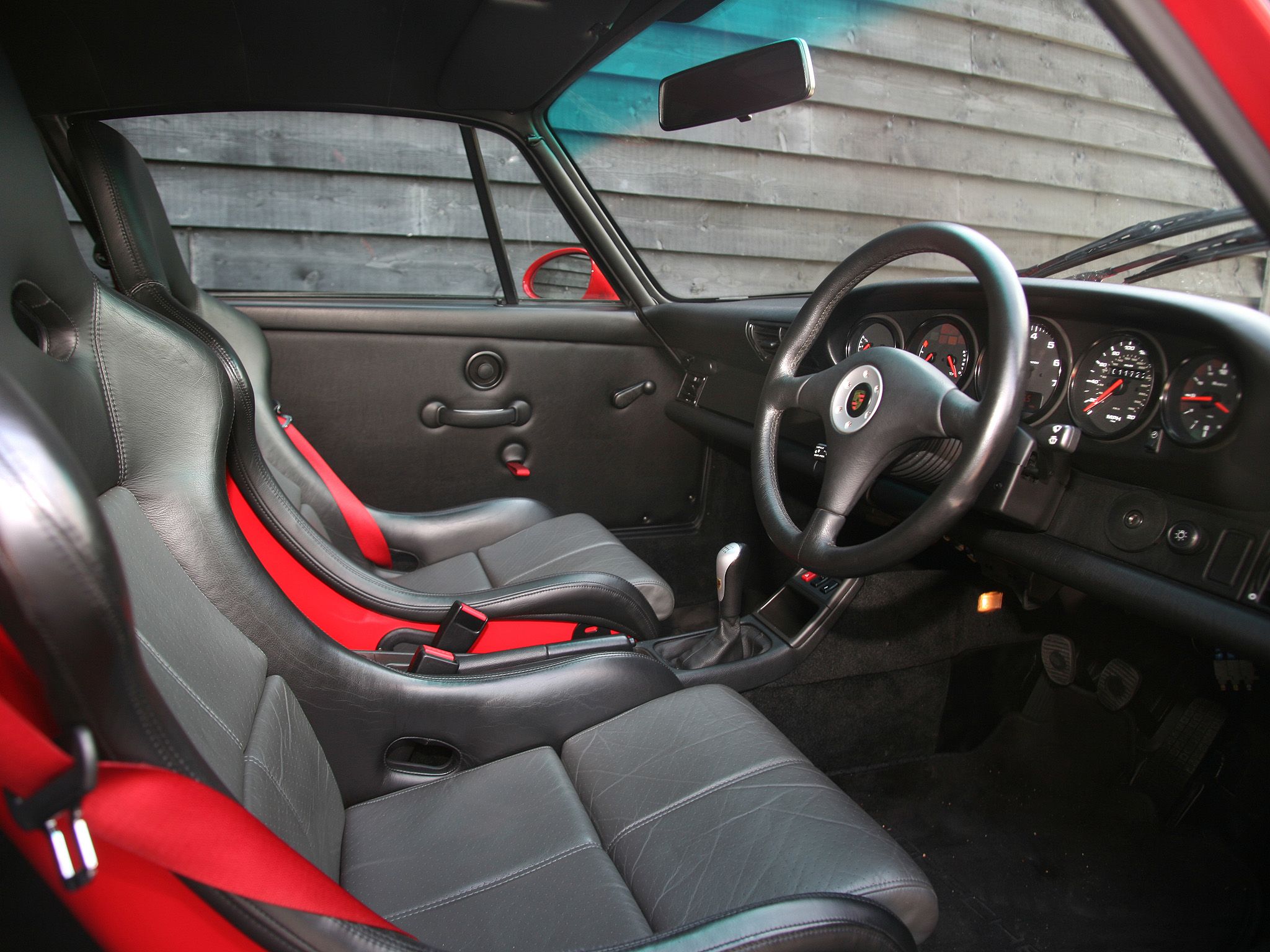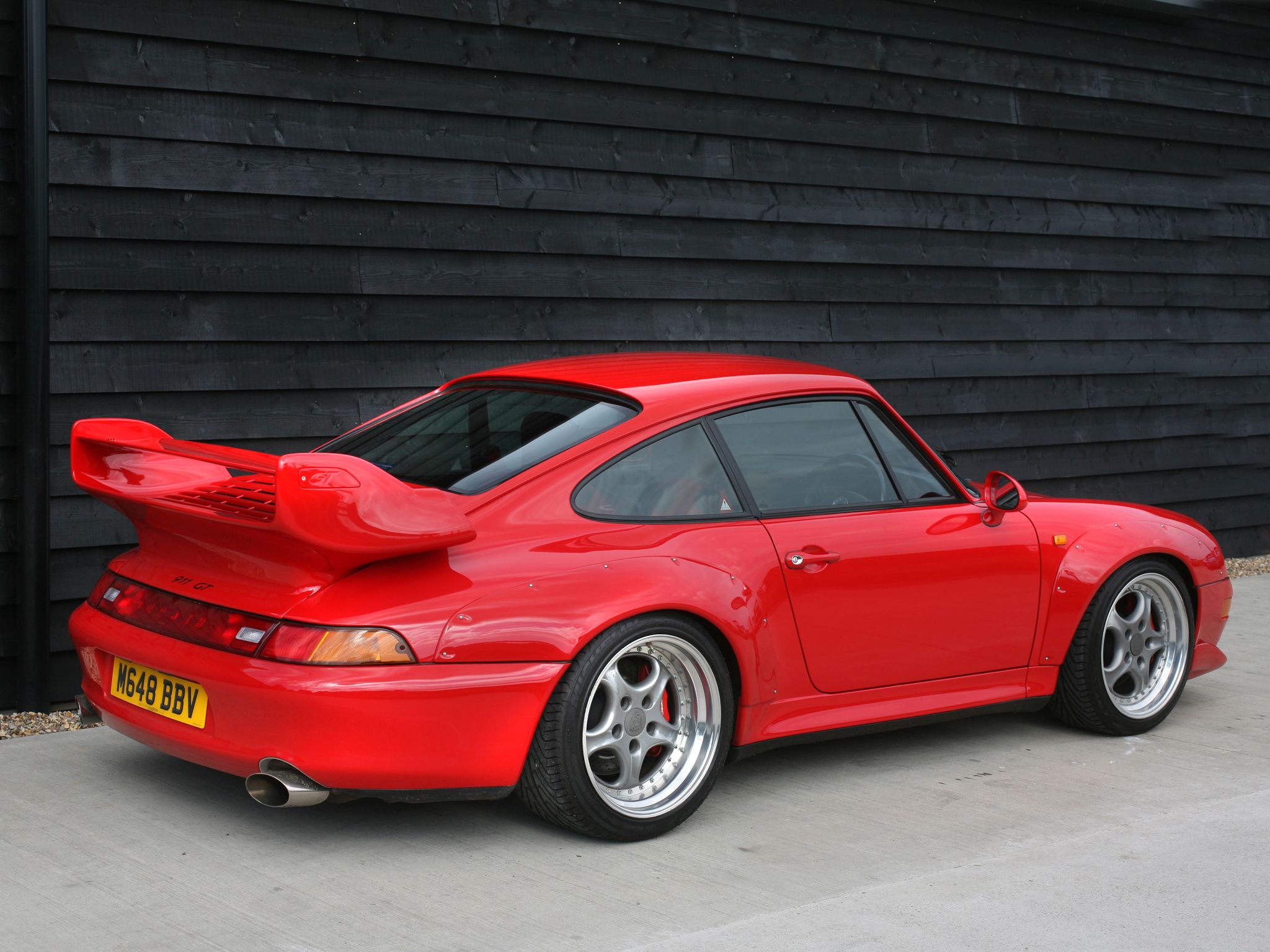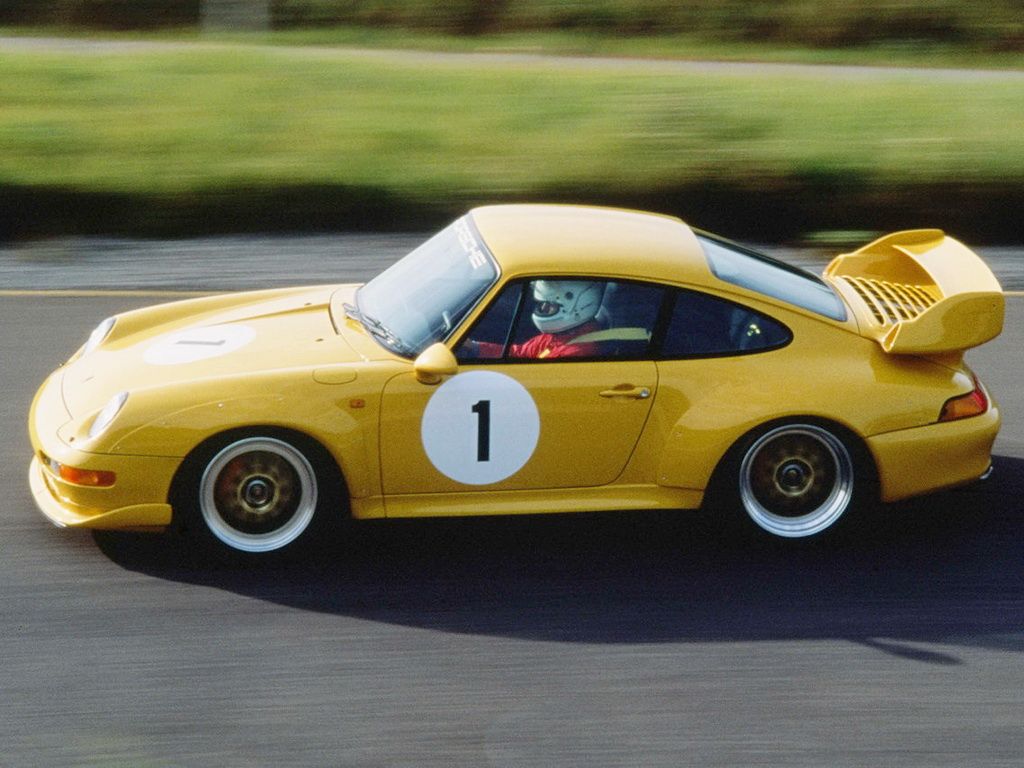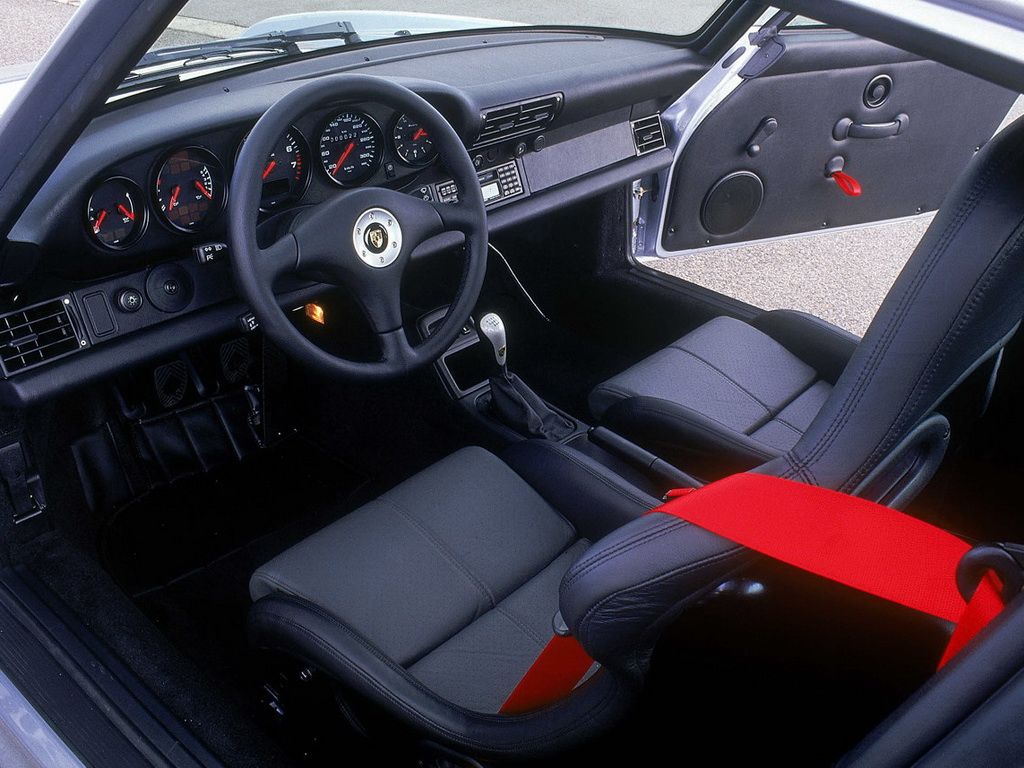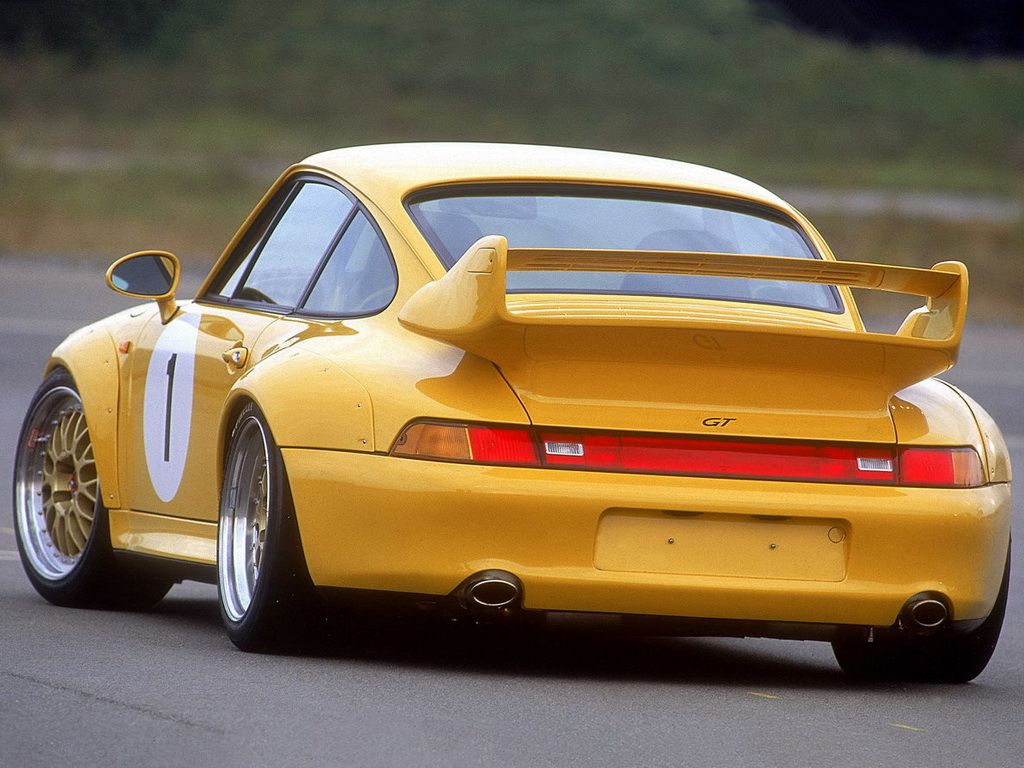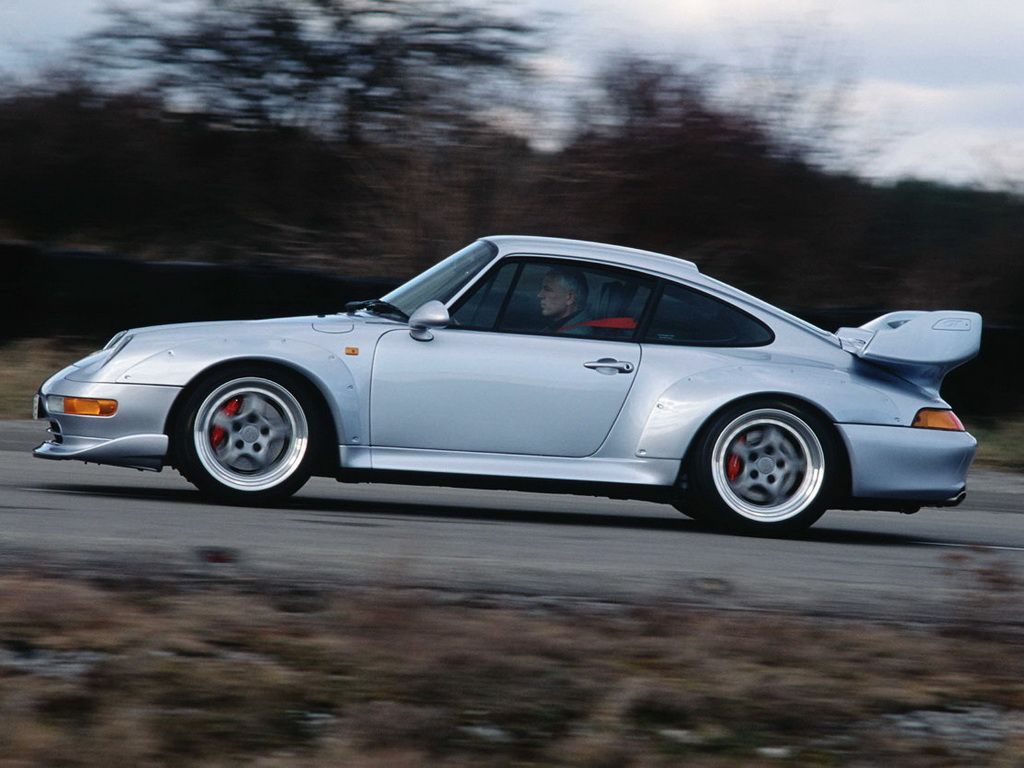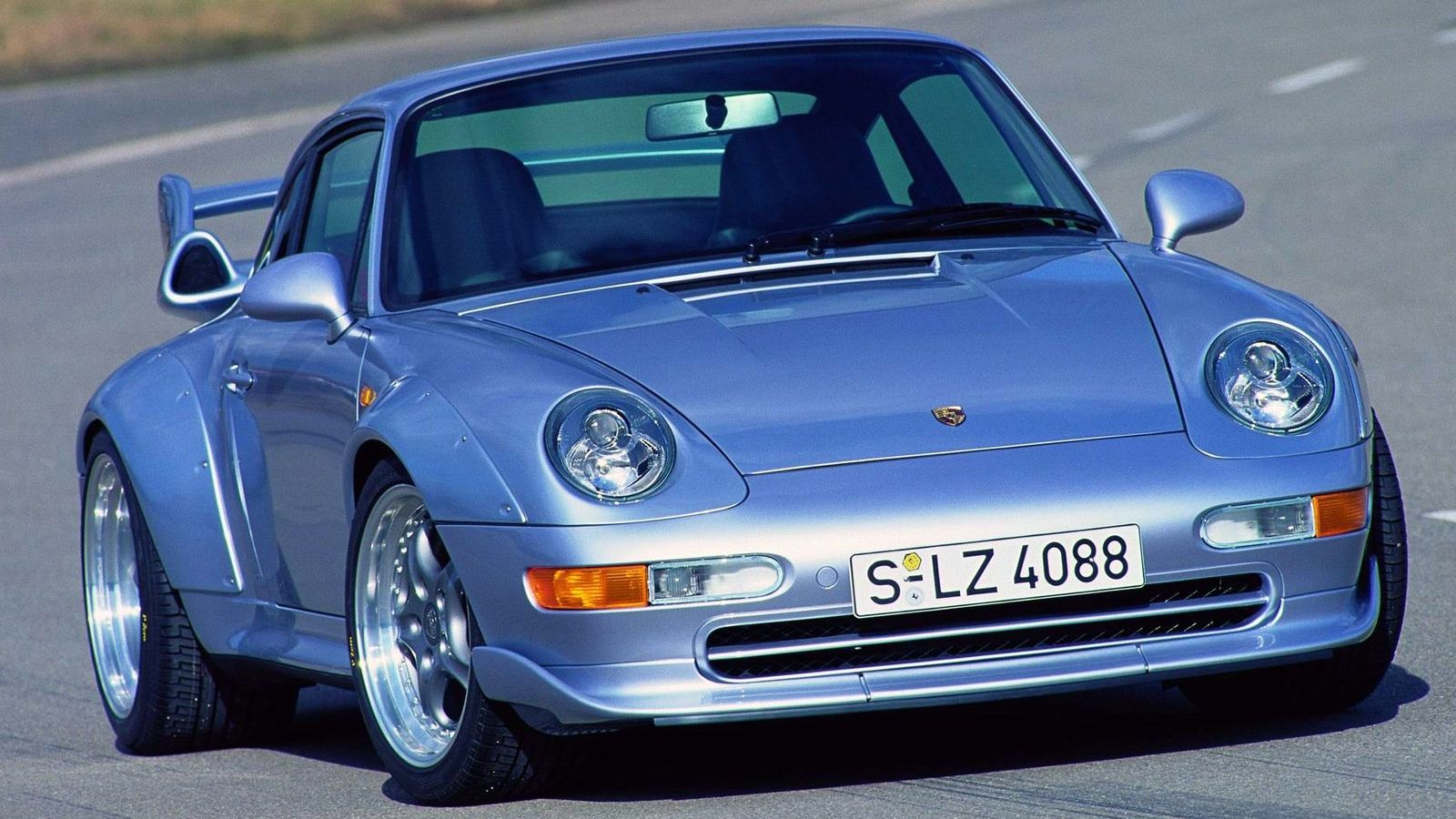Porsche->ke1 is known for many things, but one of its most important achievements is that it has become the most successful brand in motorsport->ke2345, scoring more than 28,000 victories as of 2015. As a brand, Porsche began tackling the major motorsport events in the early 1950s, but it wasn't until the 1970s and 1980s that the Stuttgart-based company became a dominant force. From the 911 Carrera Turbo of 1974 to the 911-based 934 and 935, Porsche demolished everything in its path in Group 4, Group 5 and IMSA racing through the mid-1980s.
As soon as the 964-generation->ke740 911 arrived in 1989, the Germans began experimenting with turbocharged racing versions of it, creating the Turbo S LM-GT. The car was raced with moderate success at Sebring and Daytona, but the development work behind it was far more important than its results, as it helped Porsche create the amazing 911 GT2->ke1715. But to take it to the track, Stuttgart had to meet the FIA's stringent requirements and build a road-legal homologation run. Thus the 993-generation->ke931 911 GT2 was born.
Introduced in 1995, two years after the 993 911 had been launched, the sports car was based on the 911 Turbo and built to GT2 class regulations, with Porsche naming it accordingly. Read on for a full trip down memory lane with the first incarnation of Porsche's iconic track beast.
Click past the jump to read more about the Porsche Carerra GT2 (993).
1995 - 1998 Porsche 911 GT2 (993)
- Make: Array
- Model: 1995 - 1998 Porsche 911 GT2 (993)
- Engine/Motor: flat-6
- Horsepower: 444 @ 6000
- Torque: 432 @ 3500
- Transmission: 6-speed manual
- [do not use] Vehicle Model: Array
Exterior
The aerodynamic modifications brought dramatic improvements on the performance front, enabling the GT2 to charge from 0 to 60 mph in under four seconds and reach a top speed of 187 mph, quite a benchmark for 1995.
The GT2's wider fenders were made from lightweight fiberglass to help the sports car lose more weight. Porsche actually cut the Turbo's normal fenders and replaced them with bolt-on plastic pieces. The strategy not only helped ease the repair of damaged to the fenders, but also gave the road-going version a distinct racy appearance.
The GT2's appearance was rounded off by "911 GT" badges on the engine bonnet, between the taillights and the huge wing. The "GT" is not a typo, as the street version of the GT2 race car was named like than until 1997. Starting 1997, Porsche changed its name to GT2 and labeled its rear end it accordingly.
Exterior Dimensions
|
Length |
167.1 Inches |
|
Width |
73.0 Inches |
|
Height |
50.0 Inches |
|
Wheelbase |
89.4 Inches |
|
Front track |
58.1 Inches |
|
Rear track |
61.0 Inches |
|
Curb weight |
2,855 LBS |
Interior
Customers who wanted their GT2 to mimic the racing version even more had the Club Sport pack as an option. The bundle added race-spec Recaro seats with six-point harnesses, a fully integrated roll cage, a battery cut-out switch, and a fire extinguisher. Drivers who wanted to spend less time at the track, on the other hand, could have their cars fitted with a stereo, leather sports seats from the 911 Turbo 4, driver and passenger airbags, A/C, and electric windows. Granted, Porsche made sure it could build the first-gen GT2 to meet many tastes, from racing enthusiasts determined to hoon their car on the track during weekends, to customers who needed to get to work in a jiffy.
Drivetrain
Sold with these specs from 1995 until 1997, the 911 GT2 received an update for the 1998 model year, with output jumping to 444 ponies and 432 pound-feet of twist. The 20 horses were enough to shave a tenth of a seconds off its 0-to-60 time, bringing it down to 3.6 seconds. Top speed increased to 187 mph. This version of the GT2 was known as the Evolution and was available by special request. Both cars came equipped with a specifically tuned six-speed manual transmission.
Built on 911 RS underpinnings, the GT2 also featured adjustable suspension with solid bushings, variable stabilizers and adjustable anti-roll bars. Additionally, the GT2 was updated to a stiffer rear subframe and link bearing for more precise handling, as well as new front axle kinematics.
Stopping power was provided by ventilated and perforated 12.6-inch discs clamped by four-piston aluminum calipers, yet another benchmark for the 1990s sports car. Unlike the 911 Turbo, the GT2 was rear-wheel drive, as per FIA specifications for GT2-spec racers, which also led to significant weight savings for both the road and the race cars.
Drivetrain Specifications
|
Type |
Air-cooled twin-turbocharged H6 |
|
Displacement |
3,600 CC (220 cu in) |
|
Bore × stroke |
99.1 mm (3.9 in) × 76.2 mm (3.0 in) |
|
Maximum power |
444 HP @ 6,000 RPM |
|
Maximum torque |
432 LB-FT @ 3,500 RPM |
|
Transmission |
6-speed manual |
|
Power-to-weight ratio |
6.34 LB/HP) |
|
Top Speed |
301 km/h (187 MPH) |
|
0-60 MPH |
3.9 seconds |
|
0-100 MPH |
8.7 seconds |
|
1/4 mile |
12.1 s @ 117 MPH (188 KM/H) |
Prices
When launched in 1995, the GT2 was the most expensive car in the Porsche lineup, with its sticker surpassing that of the 911 Turbo. Because of its power, track-honed reliability and its status as one of the final air-cooled 911 Turbo, the first-generation GT2 commands a massive premium at car auctions, with some examples fetching in excess of $500,000. Their collectability was also enhanced by the fact that only 57 road cars were built in addition to 110 racers. Granted, the first-gen GT2 is the most sought-after Porsche of the 1990s, surpassed only by the 911 GT1 Strassenversion, the road-legal variant of the Le Mans-winning GT1 racer, built in only 25 units.
Competition
Ferrari F355 Challenge
Given it was built as a homologation special, the GT2 was rather unique, with no other sports cars to compare itself to. However, its availability to privateer racers made it somewhat similar to Ferrari's Challenge program for the F355. Introduced in 1995 for use in the Ferrari Challenge series, the F355 Challenge was a race-ready version of the F355 road-legal sports car, which came to replace the 348 and, in turn, was later superseded by the 360.
Essentially a $30,000 factory-to-dealer kit applied to the standard car, the F355 Challenge sported modified bumpers, a rear wing (added in 1996), racing seats, a full roll cage with safety harnesses, magnesium wheels wrapped in Pirelli slicks, a competition suspension and a race-tuned clutch. The F355 Challenge drew its juice from the same 3.5-liter V-8 as the regular sports car, with a six-speed manual sending the power to the rear wheels. Only 108 units were produced.
Dodge Viper GTS-R
Sure, second-generation Dodge Viper is in no way similar to the 911 GT2, but the two clashed on numerous occasions on the race track. Starting 1997, the Viper GTS moved from the GT1 to the GT2 class, where it battled for victory against Porsche’s ultra-fast racers. The Chrysler-powered racer was no match for the GT2 at Le Mans that year, with the quickest car finishing 29 laps behind the class-winning GT2 of Elf Haberthur Racing, but it was the only reliable competitor in a category that included Saleen Mustangs and Callaway Corvettes.
The race-ready Viper GTS was powered by the same 8.0-liter V-10 found in the second-generation road car. The unit cranked out 460 horsepower, which hit the pavement through a six-speed manual transmission. A total of 100 units were built.
Although it failed to win at Le Mans against the GT2, the Viper scored three consecutive wins once the German machine was retired after the 1997 season. The GTS-R is also famous for obtaining overall wins at Nurburgring, Daytona and Spa between 1999 and 2002.
Conclusion
While both the GT3 and the GT3 RS are outstanding track-ready machines in their own right, none of them managed to match the greatness of the 911 GT2. There are many reasons for that, but I'll stick with the most important ones. Firstly, the GT2 was a homologation special. I dare you to name a homologation special that failed to steal the hearts of racing enthusiasts. Secondly, it builds on a racing tradition that started with the classic 911 Turbo and continued with dominating track beasts such as the 935.
I could also mention the fact that each generation of the GT2 was a rare and expensive sight, but you, and especially those who keep calling for Porsche to develop a brand-new GT2, already know that. But even if Porsche decided to build a fourth-generation GT2, it would still be less of a legend compared to the one and only GT2 to feature an air-cooled turbo engine. If you need more arguments, just take a good look at that sexy body. Do you feel the blood rushing through your veins?


